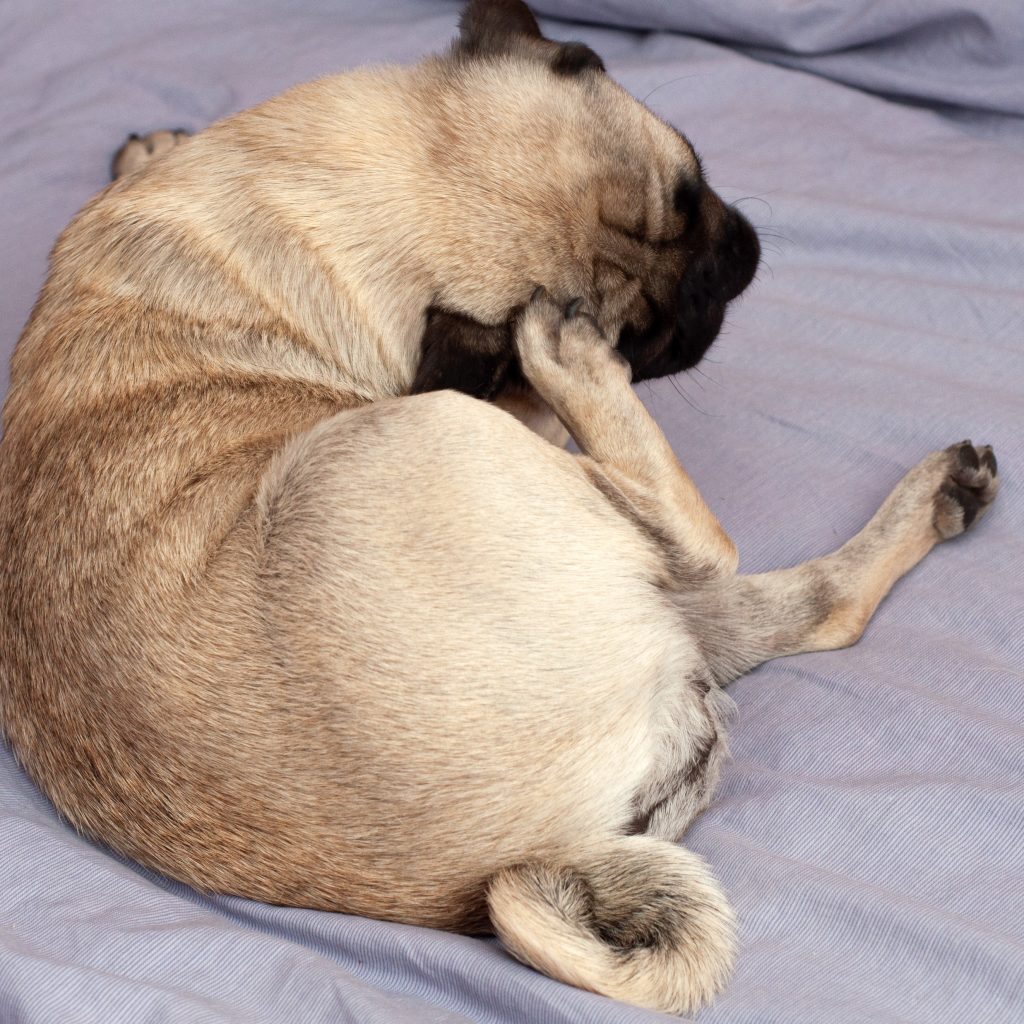Pug Allergies: Types, Signs, Home Remedies and Treatment
Pug allergies can make it very difficult for your furry friend.
Pug allergies can be extremely irritating for Pugs. They can drastically reduce your Pug dog’s quality of life.
About 20% of all dogs suffer from some sort of allergy. These allergies range in intensity and may flair up only at specific times of the year. In any event, you want to reduce Pug allergies so he can have a pleasant life.
Just like humans, several things can cause allergies in your Pug. It is essential to know the potential allergies from which your Pug could suffer. That way, you’ll be more prepared to prevent or treat them. Pug allergies are no fun. ☹
In this article, we will discuss all there is to know about Pug Allergies. This article includes allergy symptoms, allergy types, home treatments, and care to avoid Pug allergies.
Let’s get started:
Signs of Pug Allergies
Determining that your Pug is allergic can be a long and challenging process. Some Pug allergies are mild and may go unnoticed. The symptoms of allergies in Pugs may vary depending on the cause.
Pug allergy signs can range from mild paw licking to much more severe symptoms. The following symptoms could be signs of Pug allergies:
- Ear Scratching: Is your Pug is continually scratching his ears? He may have an ear infection caused by an allergy. Ear scratching may happen due to yeast infections caused by allergies.
- Paw Licking: Pug parents often overlook this symptom and mix it up with self-grooming. Your Pug may lick himself due to itching. Excessive itching might lead to paw biting. This is a tough call because, in general, Pugs lick more than other dogs.
- What is “normal Pug licking,” and what is Pug lick due to Pug allergies. It might be a tough call.
- Scratching and Biting: Scratching or biting means your Pug is uncomfortable. If he continues this behavior, it can lead to breaking the skin and then to infections. Take care of those Pug allergies before the scratching leads to more problems.
- Rubbing of the Face: When pugs experience skin irritation, they tend to rub their face. This irritation sometimes occurs in their face folds. Pugs rub their face with paws or even rub against the carpet, furniture, and walls. This may be due to Pug allergies.
- Coughing: Airborne allergens most often cause this. It can become very severe if left unchecked. Coughing requires medical attention if it persists. You and I know that Pugs are brachycephalic dogs. Their breathing is not great, to begin with. Pug allergies can cause serious complications in their breathing.
- Diarrhea/Vomiting: Food allergens can cause diarrhea, vomiting, and extreme flatulence. She may become dehydrated or develop severe medical conditions.
- Hot spots: If you notice hot spots around the inside of his legs, neck, chin, and tail, this could be due to Pug allergies. Treat hotspots Hotspots can spread quickly and become serious if left untreated. Hotspots are inflamed areas of hot, dry skin.
- Dry skin: Pug dander includes flaking or peeling skin. It causes dry and itchy skin.
- Flea bites: Fleas mostly bite a Pug’s back and around the tail of Pugs.
- Hair loss: Loss of fur can be caused by excessive itching or a yeast infection.
- Runny nose: Pug allergies due to pollen is likely causes a runny nose.
- Sneezing: Your Pug might be allergic to pollen or dust mites.
- Snoring: The inflamed throat may cause snoring from something your pet has inhaled. Always make sure your Pug can breathe comfortably.
- Pug’s breathing passage is smaller than other dogs. It doesn’t take long for your Pug to have a breathing crisis due to Pug allergies.
Check for skin color distortions, moisture buildup, and skin breakages. Usually, these are bacterial infections caused by allergens. Other Pug allergy symptoms might include fungal infections, immune system problems, etc.
The signs of Pug allergies may mimic other conditions. It is vital to have your pet evaluated by your veterinarian when problems arise.
Types of Pug Allergies
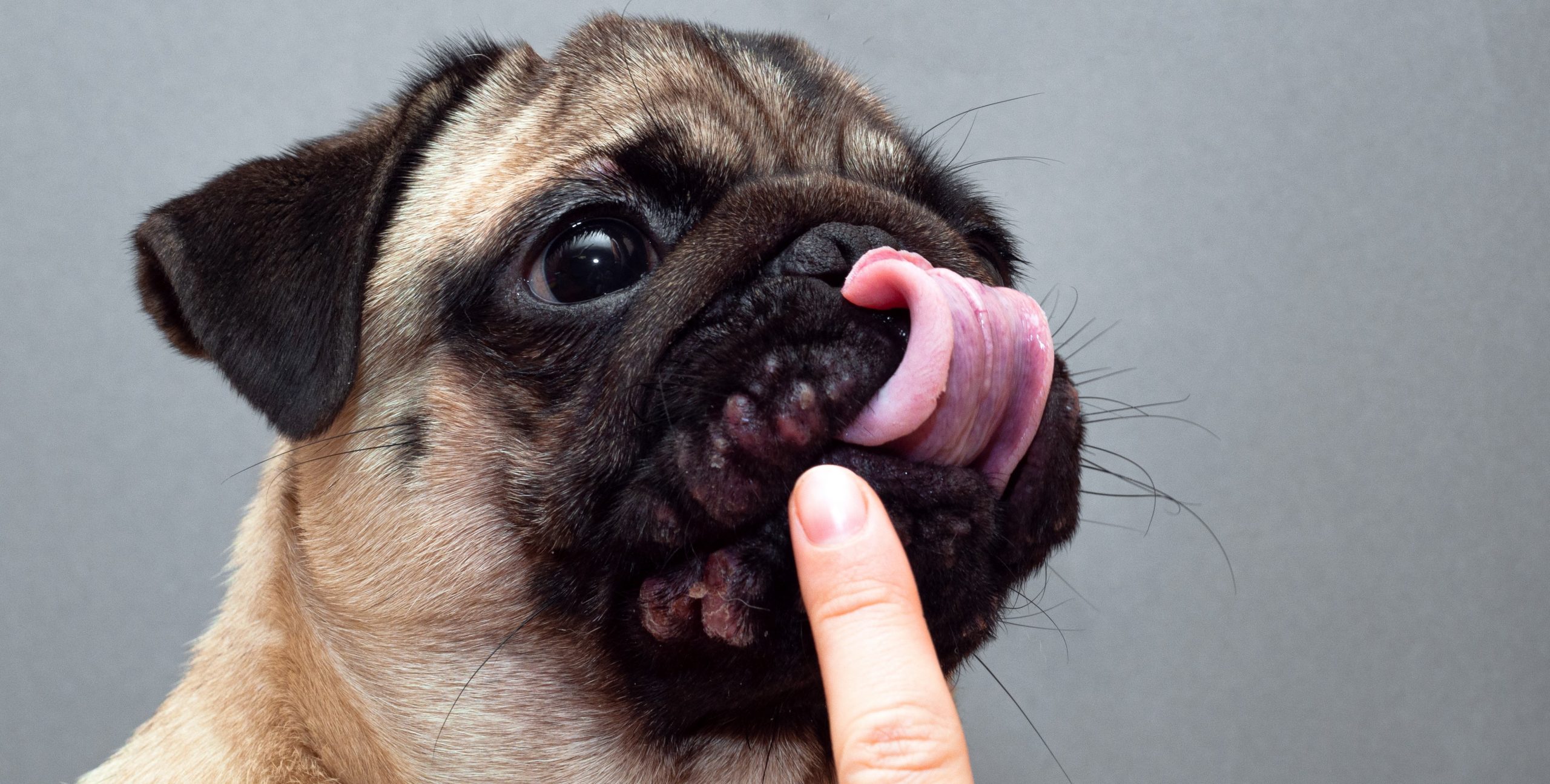
There are many different types of allergies in Pugs. Skin allergies, food allergies, and airborne allergens all pose challenges for Pugs. All these allergies have overlapping symptoms.
Skin Allergies
Skin allergies are often known as allergic dermatitis. These are the most common type of allergic reactions.
Commonly affected areas are the feet, belly, folds of the skin, and ears. It is essential to ensure that you keep them properly cleaned.
All skin Pug allergies pose the risk of secondary infection. If your Pug irritates his skin by biting, licking, and scratching, his skin may become infected.
Food Allergies
Pugs love food more than most anything. And ironically, food is the most common cause of allergies in Pugs. Your Pug dog can be affected by some aspects of its diet.
These allergy-causing foods include:
- Dog food additives are the most common culprits of food allergies. They include artificial flavoring, food coloring dyes, and synthetic preservatives.
- Fillers like wheat, soy, corn, and even grains.
- Milk, eggs, and specific proteins can also affect Pugs.
Food allergy symptoms range from:
- Skin conditions (hives, facial swelling, itchiness)
- Gastrointestinal signs (vomiting and/or diarrhea)
- A combination of both
- Chronic ear or foot infections
Pugs and dogs, in general, have a high dairy intolerance. Their digestive systems are not equipped to handle milk products adequately. This could lead to bad gas, diarrhea, and possibly vomiting.
The ideal way to diagnose and treat a food allergy is to work with your vet to manage your Pug’s allergy symptoms. Food allergies are often diagnosed using an elimination diet. You need to discover the ingredient causing the allergic reaction.
Airborne Allergies
These are allergens that can be inhaled. Airborne allergies in Pugs are usually caused by dust, pollen, mold, or other inhalants. Dust mites and their droppings are the most common airborne allergens.
There are, however, other airborne allergens that can create Pug allergies, such as:
- pollen
- weeds
- types of grass
- fine particles from pesticides, perfumes, and air fresheners
Symptoms of airborne allergies in Pugs are:
- Common: Itching (chewing, licking, or scratching all over their body)
- Uncommon: Respiratory issues
Contact Allergies
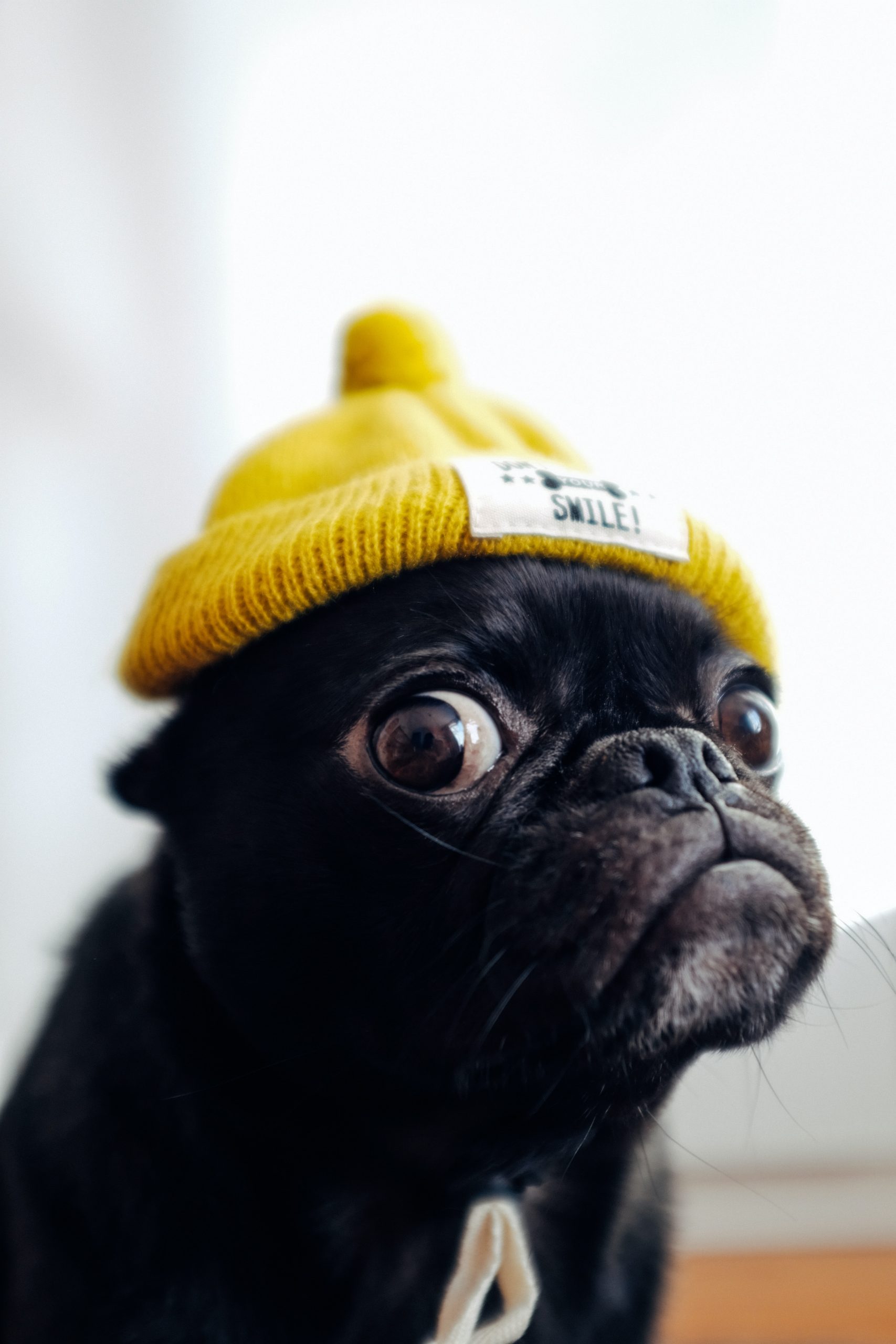
This includes anything that a Pug comes into physical contact with. Many materials and things around your home could be problematic for your Pug.
- Perfumes
- Cleaning products
- Fabrics
- Rubber toys and other items
- Plastic bowls and other utensils
- Some Pugs can have allergic reactions to medicated shampoo
These allergens can result in itching, scratching, and sneezing. The best way to prevent them is to remove the allergen from your Pug’s environment altogether.
Home Treatments for Pug Allergies
Fortunately, there are ways to increase your dog’s immune system. This decreases the effects of Pug allergies. You may want to try some fantastic home remedies instead of medications from the vet.
There are several options available that can help your Pug.
Let’s have a look at them:
Coconut Oil
Coconut oil has many benefits for your furry friend. The natural coconut oil has antiviral, antibacterial, antimicrobial, and antiprotozoal properties. It reduces yeast and fungus on contact.
Coconut Oil is effective in healing irritated skin, hot spots, and abrasions. It contributes to healthy skin and reduces allergic reactions to fleas.
Aloe Vera
Aloe vera has antibacterial, antifungal, and anti-inflammatory properties. It is an incredible natural remedy for treating itches and hot spots when applied to the skin. The cooling effect of aloe vera lessens the discomfort immediately.
When you use aloe vera for your Pug, make sure that you use only the gel. The leaf contains saponins that can make your Pug sick. Apply Aloe vera twice a day.
Apple Cider Vinegar
Apple cider vinegar is a natural and safe remedy for your Pug’s dry and itchy skin. It has antiseptic and antifungal properties and prevents infections.
Apple cider vinegar gives relief from hot spots and fights yeast infections on Pugs’ paws. Apple cider vinegar also naturally repels fleas, ticks, and biting flies. Apple cider vinegar can be used as a rinse for your dog’s paws. This takes off some of the pollen and allergens that accumulate.
You can use apple cider vinegar in a 50/50 water/apple cider vinegar solution to soothe itchy skin. You can spray it directly onto itchy areas for some relief. It should not, however, be used on open wounds or bites.
Apple Cider Vinegar is a great way to combat uncomfortable Pug allergies.
Chickweed
Chickweed is a flowering plant that has many benefits for your Pug dog. Chickweed has anti-inflammatory properties. This makes it useful for treating itches and hot spots.
Chickweed has calming properties that make it an effective remedy for skin irritations. You can apply chickweed gel to your Pug dog’s skin. Also, use it to treat minor bug bites, rashes, or eczema.
Thyme
Thyme contains antioxidants and has anti-inflammatory, antiseptic, and antifungal properties. It can be used for Pugs who have skin and yeast infections.
Thyme helps with upset stomachs and creates a more healthy digestive tract.
If your Pug is chewing at her paws, try making an infusion out of thyme and apply it to the affected areas.
Offer a Simple, Healthy Diet

Your Pug might be allergic to the food you are feeding him. Feed your dog high-quality dog food without grain, corn, by-products, or other fillers.
Mimi and Lulu eat a mix of two types of food. One food is The Farmer’s Dog.
The other brand is I and Love and You.
The Farmer’s Dog is a little expensive. And although Mimi and Lulu are totally worth it, I supplement it with healthy kibbles, I and Love and You. They love the mix!
Supplement with Dog Probiotics
Probiotics help to boost your Pug’s immune system. Keeping his immune system high is one way to fight off allergic reactions.
Probiotics are good for your Pug’s overall health. They also protect him against infection and disease, and as a bonus, helps with his gut health. They may even help to reduce those famous Pug flatulence!
Here are some Probiotics you may want to reduce those Pug allergies:
Zesty Paws Probiotic Bites with Natural Digestive Enzymes Pumpkin Flavor Chews for Dogs
PetHonesty Allergy Relief Immunity Strength & Digestive Health Soft Chews Dog Supplement
PetHonesty Probiotic Snacks Digestive Health Soft Chews Dog Supplement
Skip Harsh Detergents and Household Products
Your Pug might be allergic to the detergent you use to clean their bed and blankets. He might also have allergies from fabric softeners, bug sprays, or cleaners. These cleaners could be on your carpet. Try to skip these harsh chemical products and switch to a more natural solution.
Only Offer Hypoallergenic Treats
If your Pug has food allergies, you need to have a check on their diet, snacks, and treats. Use those foods in dog treats that are healthy and don’t bother your dog.
Check out these treats and see if these are right for your Pug:
Hill’s Prescription Diet Hypo-Treats Dog Treats
Grandma Lucy’s Organic Pumpkin Oven Baked Dog Treats
Full Moon Organic Chicken Training Dog Treats
Mimi and Lulu love the Full Moon training treats, and I love them because they’re small.
We all know that it’s easy for Pugs to put on the pounds. These small treats help to keep their weight down.
Oatmeal
Oatmeal is one of the incredible home remedies for Pug allergies and skin itching. If your dog has mild skin problems, an oatmeal bath might do the trick.
An oat bath is very soothing for your little furry friend. It removes allergens and leaves their coat healthy and shiny. Oatmeal is not suitable for Pugs with yeast infections!
How to give your Pug an Oatmeal Bath:
1. Buy oatmeal.
Be sure to buy rolled oats, not instant oats. Make sure there are no added ingredients.
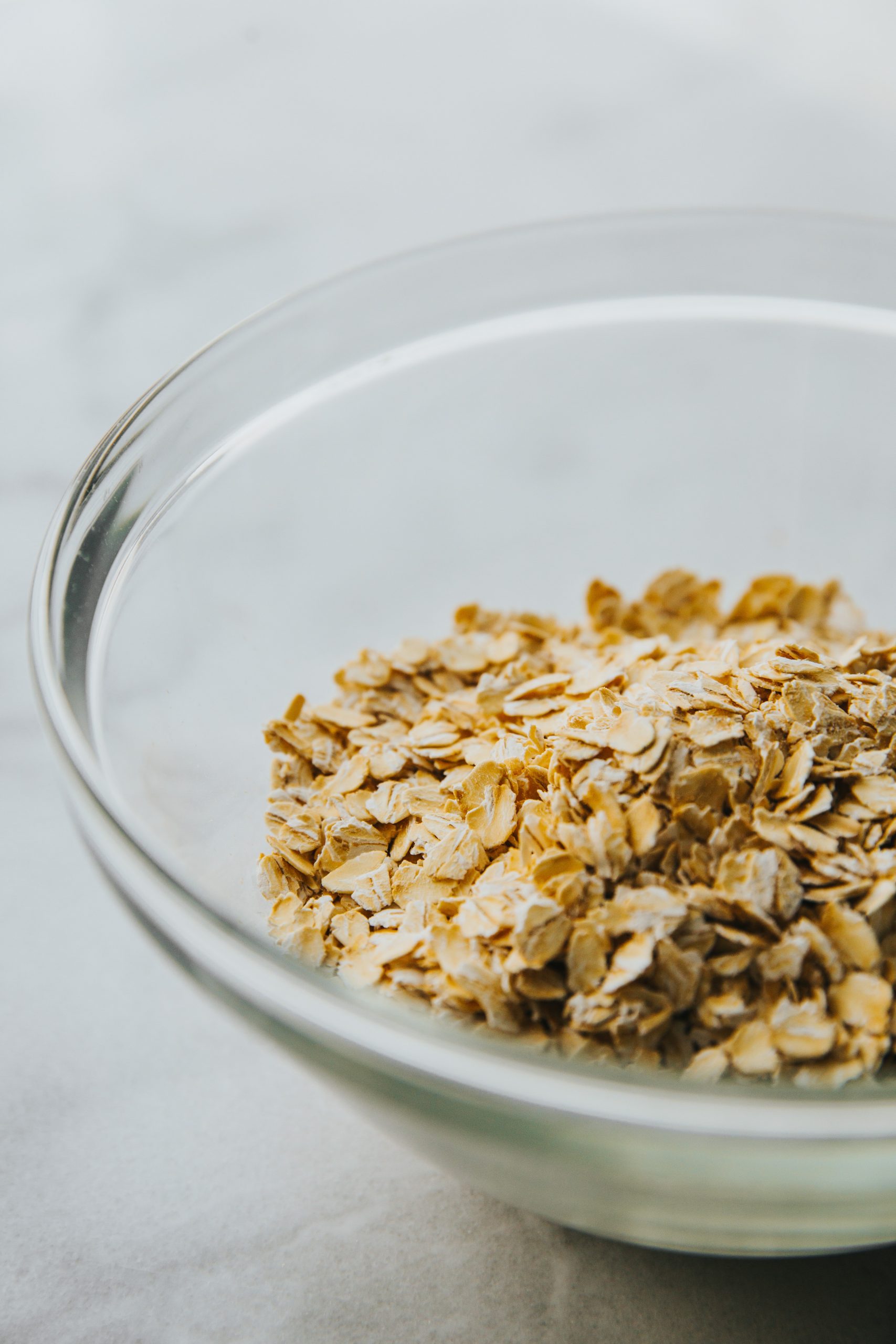
2. Grind Rolled Oats.
Put rolled oats in a blender or coffee grinder and reduce to a fine powder. Have ½ cup of powder for each Pug per bath.
Fill up the tub or large sink with warm water high enough to reach your Pug’s stomach.
Add oat powder to bath.
3. Add Pug to Bath Water.
If your Pug tolerates water higher than his stomach, then add water. Otherwise, pour water over him and massage into his skin.
Try to keep your Pug in the water for 10 minutes. It’s a good idea to keep massaging the oatmeal water into his skin.
4. Rinse your Pug with clear, warm water.
5. Dry Pug with a towel.
6. Watch your Pug run around the room with the zoomies!
If you don’t want the hassle of grinding up whole oats, purchase an oatmeal bath shampoo.
I‘ve used this Dog Shampoo with Oatmeal and Aloe. Shea Butter for Smelly Dogs, Dry Itchy Skin, Puppy Shampoo, and Sensitive Skin
On Mimi and Lulu. They don’t have skin allergies but tend to get a little stinky at times. This does the trick! After a bath, their fur is really soft.
When Should your Pug See a Veterinarian?

Although it would be great to treat all allergy-related problems at home, it’s not possible. If the allergy symptoms persist, then don’t delay in getting your Pug to the vet. In the case of severe allergies, seeing the veterinarian right away is the best way.
Your vet can run an allergy test. Some skin issues may need prescribed medications.
Tip: Pugs are a brachycephalic breed, and breathing issues are always a cause of concern. If your Pug is having trouble breathing, take him to the vet right away!
Pug Care: Going Forward
Help your Pug to avoid whatever is causing the allergy, if possible. Of course, that will depend on your Pug’s allergies.
However, many Pug allergies may be due to genetics. Some environmental factors are out of your control. Pug allergies don’t happen because of anything you did or did not do. Keep your Pug healthy to try to manage the allergies.
Consider the following tips that you can take to manage your Pug’s allergies.
- Healthy food
If you want your Pug to be healthy and full of energy, it is essential to feed them properly. Look for an ideal balance of vitamins, minerals, proteins, fats, and carbs. The diet should be based on your Pug’s age, gender, and activity level. Switch to 100% wholesome foods or home cooking.
Learn how to read a dog food label, so you know what your Pug is really getting. Avoid fillers, artificial flavors, dyes, and chemicals.
- Vaccination and vet visits
Regular vet visits are essential for your Pugs. Keep up with your Pug’s vaccines to protect them from diseases.
- Invest in Vacuum Cleaner and Air Purifier
Use a vacuum regularly to keep your house clean. These can eliminate allergens such as mites. Also, use an efficient air purifier to reduce airborne allergens.
Due to the ongoing Pug hair problem, you will need to vacuum often anyhow. Make sure you get a vacuum that does a good job.
No one likes spending their time vacuuming up Pug hair.
Pet Hair vacuum cleaners can be expensive, but here are a few you might want to consider:
BISSELL Cleanview Swivel Pet Upright Bagless Vacuum Cleaner
BISSELL, 2999 MultiClean Allergen Pet Upright Vacuum with HEPA Seal System
Many people love Shark vacuum cleaners, but of course, they are a bit expensive:
Shark NV356E Navigator Lift-Away Professional Upright Vacuum with Pet Power Brush and Crevice Tool
- Keep your Pug’s Belongings Clean
Be sure to dust and clean your Pug’s toys and bedding thoroughly. Wash your Pug’s rugs, beds, cushions, blankets, and toys regularly to avoid allergens.
Clean your Pug after they play outdoors. When your Pug comes in the house, wipe her off with a wet towel or Hypoallergenic pet wipe. Allergens on the skin can trigger Pug allergies.
Some other measures include:
- Get rid of plastic food dishes and toys.
- Treat hot spots with either lotions, sprays, or allergy shampoos.
- Apply quality paw wax every week.
With some effort and changes, you can manage your Pug’s allergies and keep him healthy.
Pug Grooming and Careful Examination
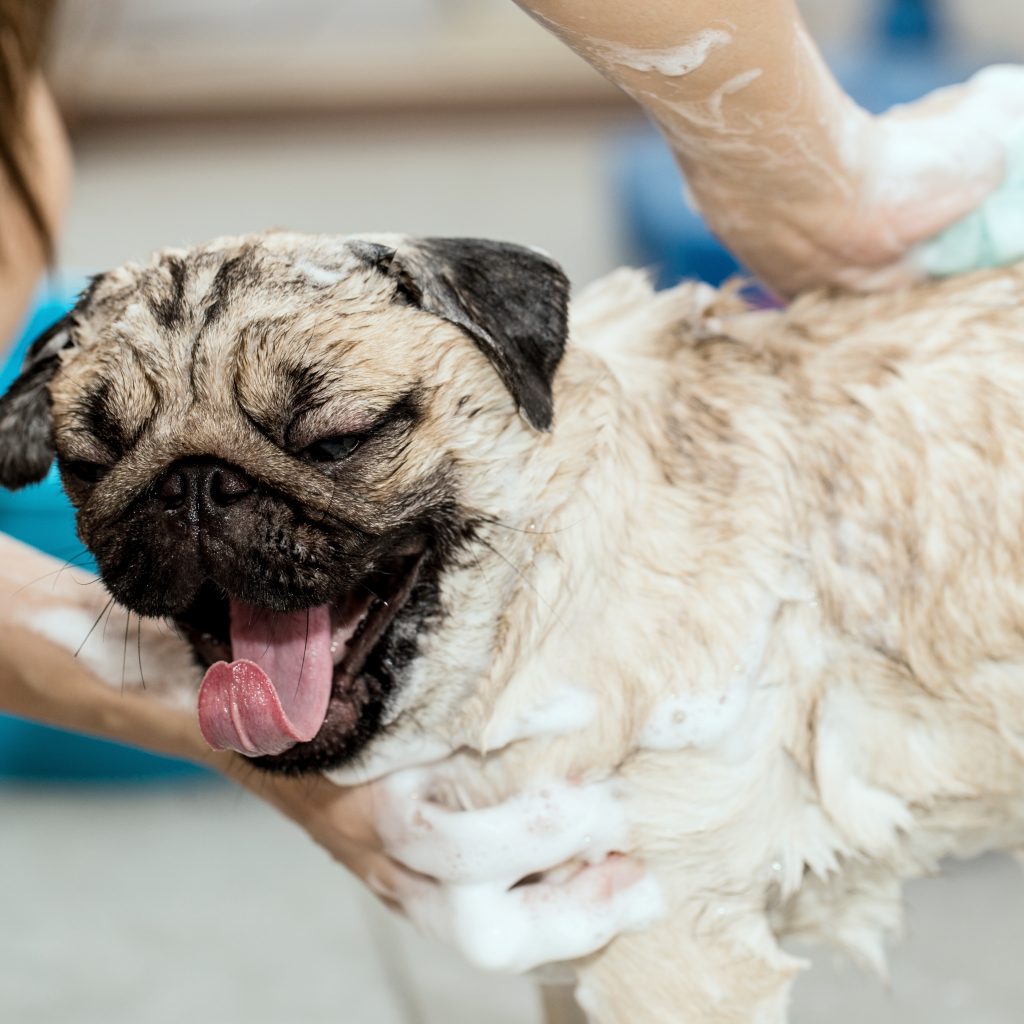
Regular grooming and careful weekly examination are essential. Always keep an eye out for early signs to spot potential problems early. Assess all areas of food, airborne triggers, and contact allergens.
Avoid Pug skin problems by keeping their folds clean and dry.
Here are some Pug’s grooming needs:
- Brush your Pug’s coat regularly. It’s a good idea to brush 3 to 4 times per week.
- Give a warm bath with a good quality canine shampoo and conditioner. A bath should be given once a month or when needed.
- Check out your Pug’s folds and wrinkles regularly. This is where the germs and dirt hide. Some Pugs have ongoing infection problems in these areas. Use wipes to clean out the folds.
- Don’t forget their teeth. They need to be brushed at least three times a week to remove tartar buildup and bacteria.
- When brushing, check for redness, tenderness, inflammation, or other signs of infection.
- Trim your Pug’s nails regularly.
- Your Pug’s eyes should be clear, with no redness or discharge.
- Once a week, check your Pug’s ears, and if needed, clean inside the ear with a cotton ball and a gentle cleanser.
- Always pay attention to your Pug’s behaviors. Scratching, licking, biting, and hair loss can be due to Pug allergies. If you see these excessive behaviors, contact your vet immediately.
Groom your Pug at least once per week. During that time, examine your Pug for any allergy problems. Make it fun for your Pug by using praise and rewards during this time.
Final Thoughts
You can help your Pug live his best life and take care of Pug allergies quickly. Pug care includes a healthy diet, grooming, taking them for check-ups to a vet, and much more. Good overall health will keep your Pug’s immune system strong. This may help to cut down his or her likelihood of developing allergies.
The sooner you seek medical attention, the better the outcome will be for your little friend. Take care of those Pug allergies right away.
Have you tried any of these home remedies? Comment below and let us know what worked or didn’t work for your Pug. Pug allergies make for an unhappy Pug. We all want to know what works to help our Pugs stay healthy and happy!

